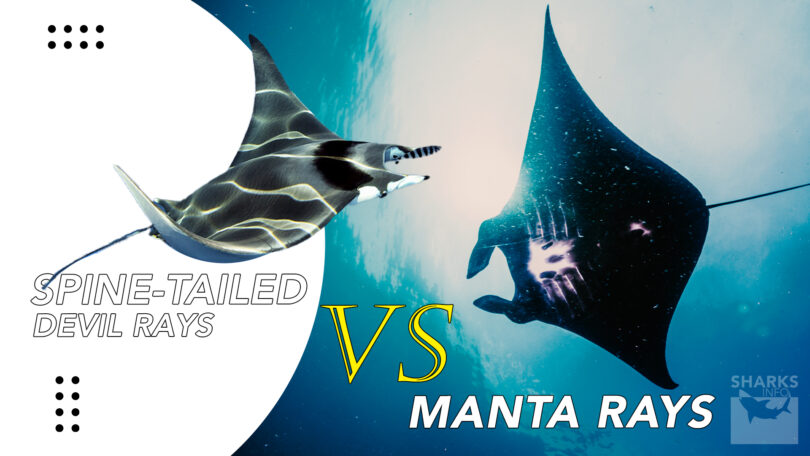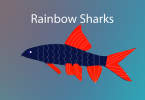Over millions of years, the enchanted underwater world contains a variety of fascinating creatures, each possessing unique characteristics. Among these, the spectacular marine species include Manta rays and Spine-tailed devil rays. These two species are somewhat similar but have interesting differences. This article will delve into the lives of these gentle giants, and investigate their physical characteristics, habitats, behavior, and conservation status.
Comparative Study: Manta Rays vs. Spine-Tailed Devil Rays
There are several features and adaptations that mark a clear boundary between Manta rays and Spine-tailed devil rays. Some of these characteristics are explained below:
Habitats And Distribution
Manta Rays:
Manta rays are known to live in warm waters of tropical and subtropical regions, usually found in coastal areas and coral reefs. Manta rays are known for their migratory patterns as they follow nutrient-rich waters to feed on plankton. You can encounter these magnificent creatures in places like Indonesia, Maldives, Hawaii, and the Great Barrier Reef in Australia.
Spine-Tailed Devil Rays:
The spine-tailed devil rays are widespread in warm tropical waters over the globe. They also exhibit remarkable migration patterns and travel to larger schools to take advantage of food sources. Devil rays are commonly seen in the Pacific, Atlantic, and Mediterranean regions and are frequent in places like the Gulf of California, the Azores, and the Sea of Cortez.
Physical Characteristics
Manta Rays:
Manta rays are known for their awesome size, grace, and elegance. Their wingspans exceed around 20 feet, listing them as the largest creatures of the rays family. They possess slender diamond-shaped bodies, usually darker on the upper side and lighter on the ventral side, with horn-shaped head wings, which guide plankton-rich water into their open mouths.
Spine-Tailed Devil Rays:
The spine-tailed devil rays are smaller than a Manta ray, as their wingspan can reach approximately 17 feet in length. They have elongated bodies of darker coloration from both sides and long, pointed head feathers that curve forward, giving them a devilish appearance.
Feeding Behavior
Both Manta Rays and Spine-Tailed Devil Rays are filter feeders and rely on their specialized mouth structures to feed on plankton and other small organisms.
Manta Rays:
Manta rays use their skull fins to create a funnel-like pattern to concentrate plankton and small organisms into their mouths. They are particularly interested in feeding on small organisms such as zooplankton.
Spine-Tailed Devil Rays:
Spine-tailed devil rays also feed on plankton, using their horn-like appendages that allow them to lure the prey into their mouths. They often engage in symmetrical feeding, where groups of rays feed symbiotically on plankton.
Behavior And Social Structure
Manta Rays:
Manta rays are known for exhibiting gentle but solitary behavior. They are often seen walking alone or in small groups, showing their enthusiasm and willingness to interact especially when they encounter humans. They were spotted walking through cleaning areas, where young fish clear parasites from their bodies, showcasing a fascinating mutualistic relationship.
Spine-Tailed Devil Rays:
Spine-tailed devil rays are highly social creatures, which often form gatherings that can hold hundreds or even thousands of species together. These groups seem to flow out of the water in harmony, showcasing a breathtaking view.
Conservation Status and Threats
Manta Rays:
Despite its charisma, manta rays face great threats, especially from human activity. They are vulnerable to commercial fisheries, and target hunting to be used in traditional medicine.
Spine-Tailed Devil Rays:
Spine-tailed devil rays also face pressures that threaten their populations. They are often accidentally caught in fish traps and are also targeted for their gill plates. Furthermore, habitat destruction, pollution, and climate change impact their habitat and food sources greatly. Conservation initiative aims to promote sustainable fishing practices to mitigate these risks.
Final Thoughts
In the vast area of the oceans, the Manta rays and the Spine-tailed devil rays stand out as exotic creatures, making a unique contribution to marine ecosystems. Their physical characteristics, behavior, and their habitats exhibit a fascinating adaptation that allows them to thrive in a dynamic underwater environment. The conservation efforts to protect these species are necessary to remind us of our responsibilities to preserve these wonderful creatures and the subtle ecosystems they inhabit.




